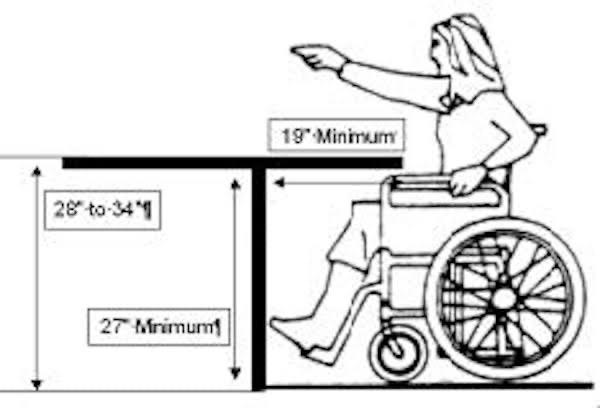
An ADA-compliant building takes into consideration all ADA requirements and guidelines. The ADA, also known as the American Disabilities Act has certain rules, standards, and regulations for accessible design. This means that there are specific guidelines businesses and public organizations need to follow. To give every customer the best experience, following the rules and guidelines is essential.
ADA compliance makes every business as inclusive as possible. This doesn’t just serve people with disabilities, it also serves the businesses by improving their customer base which means growth for the business or organization. This article will explain more about ADA compliance standards and also discuss some ADA knee clearance case studies. Continue reading to learn more:
As stated in the introductory part of this article, ADA compliance is otherwise known as the Americans with Disabilities Act Standards for Accessible Design. ADA compliance is the law that ensures that individuals with disabilities enjoy the same opportunities and privileges as other individuals in the public spheres of accommodation. What this means is that everywhere in an organization must be accessible to people with disabilities including the restroom and other spaces.
The best way to know if your business is ADA-compliant is to check the measurements. There are other ways to ensure compliance but the most common and least expensive way is to get a measuring tape and measure. You’ll have to carry out a walkthrough of your space and take measurements to know if any changes need to be made in certain places.

The case study under consideration is drawn from the study of other accessible designs for knee clearance in other businesses. This case study will focus on accessible design for picnic tables for knee clearance ADA.
Below are the ADA considerations for a picnic table in any business or organization:
Picnic tables must stand at a height that is comfortable for users in wheelchairs. The height should be at least 28 and 34 inches from the ground to the bottom of the tabletop. Also, there must be adequate knee clearance which should not be more than 27 inches high, 30 inches broad, and 19 inches deep.
All table amenities should be accessible to all users (all amenities including fixed chairs). This means that the table must be designed so that its outermost edge should not be more than 24 inches from the wheelchair seating space.
The table’s surface must be hard and strong to ensure that all mobility devices remain sturdy and stable.
There should be a route prepared especially for wheelchair users to and from the picnic table that is at least 36 inches wide.
ADA-compliant picnic tables are designed to have one or more chairs removed or are built with an overhang on the ends to ensure a wheelchair user can sit at the table without having to transfer to a bench.

When creating an accessible design for a picnic table, it’s important to follow the extensive ADA-accessible design guidelines. For this, you need to work with a reliable contractor like us at All Things Inspector, to ensure an equal degree of safety and access to all, including those with disabilities.

As a business owner, you have a responsibility to ensure that your business complies with the Americans with Disabilities Act(ADA). Not only is it a

When making renovations, there are many things you need to consider, from the structure to the aesthetics of the building. However, one major aspect that